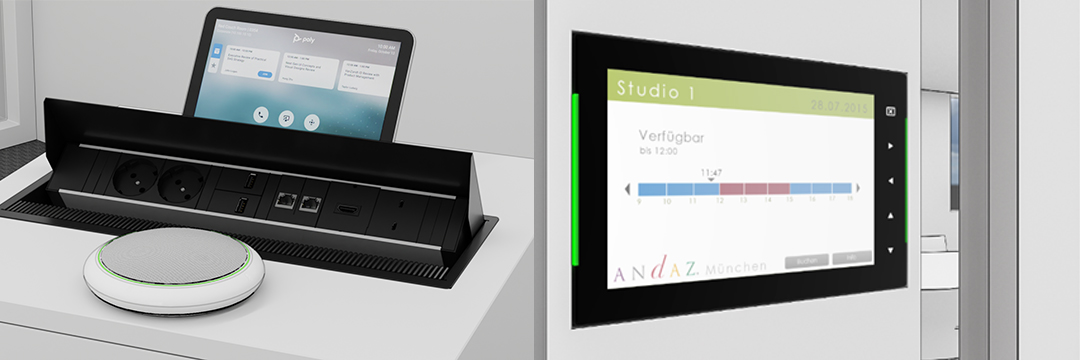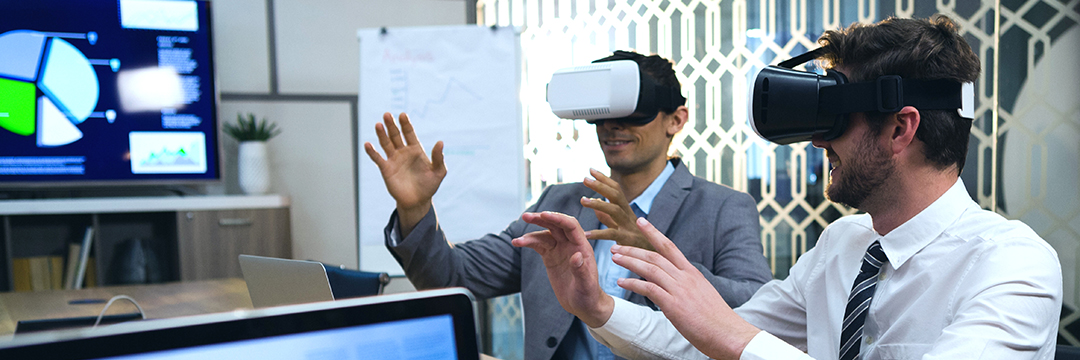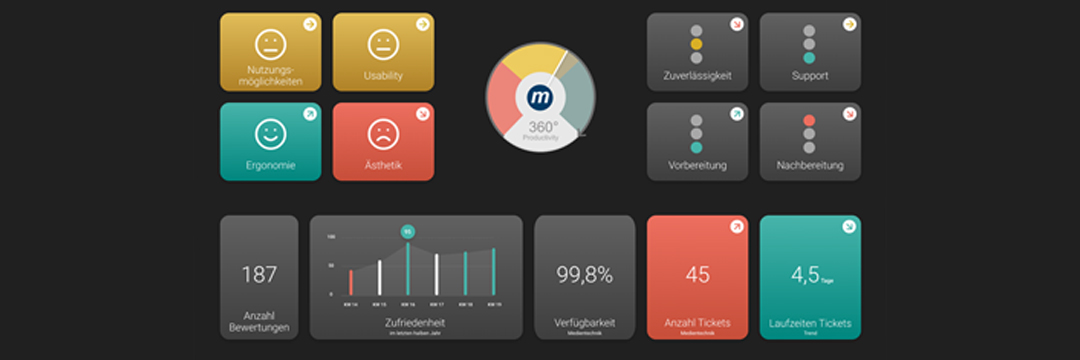Working together…separately
Distributed, connected working from different locations has proven its worth, especially during the pandemic. Many employees want to continue working from home and take advantage of the new flexibility and mobility. Employers ask themselves how they can still bring their employees back to office and continue to create a sense of community. One thing is certain: traditional individual workstations in offices will be increasingly eliminated in the future and space will be optimised for a new way of working. Communication and collaboration areas for flexible activity-based working will become increasingly important., and intelligent space management is a must. Room and desk booking systems, smart sensor technology and data-controlled building automation is increasingly becoming a standard.
Hardly any meetings without remote participants
With the increasing number of hybrid meetings, there will hardly be any meetings without participants from other locations. The technological challenges that this brings means that a functioning technical infrastructure is increasingly crucial for employee productivity.Creating meeting equity for the remote participant is a vital part of the workplace, ensuring they can be seen and heard to have the same opportunities in the workplace as people attending a meeting in person. Great technology means they can still interpret non-verbal signals, maximise concentration and productivity in the meeting. The visibility and relevance of high-quality meeting spaces and service structures have risen sharply. AV technology and IT now play a key role in the modern workplace. Whether in meetings, corporate communications or customer presentations, in business-critical situations, the digital channels must function and support complex communication as comprehensively as possible. The spatial conditions must be adapted to the new use cases including optimising camera perspectives, lighting and acoustics.
Everyone is reinventing themselves
As a result, companies are investing more in technology, upgrading spaces with UCC systems, especially Microsoft Teams rooms. However, the purchase is about much more than just the hardware. The technology always serves the users to perform tasks in the best possible way and should be tailored accordingly. The larger the company, the more critical it is to develop sustainable and efficient operating concepts to ensure the availability and cost-effectiveness of the technical infrastructure. AV, IT and Workspace Management have to cooperate more and reinvent themselves. There is no more time for a project-based approach. High-quality technology is no longer enough. A smooth user experience is the key to high productivity. Service concepts for fast provision and response times, regulated framework agreements with service providers and remote management systems are needed to meet the new requirements.
For modern procurement and rollout models, scalable and adaptable space and technology standards must be developed and continuously refined in terms of lifecycle management in order to be able to react quickly to changes such as changing requirements or discontinued products.
AV as a Service as an alternative
macom helps with the implementation of new technologies and work processes
macom can provide comprehensive support to companies in the implementation of new technologies and work processes and the digital business transformation. With our internal trend scouting, our own Innovation Hub macomLAB and best practice experience from countless projects, we are happy to advise you. Get in touch with us!




